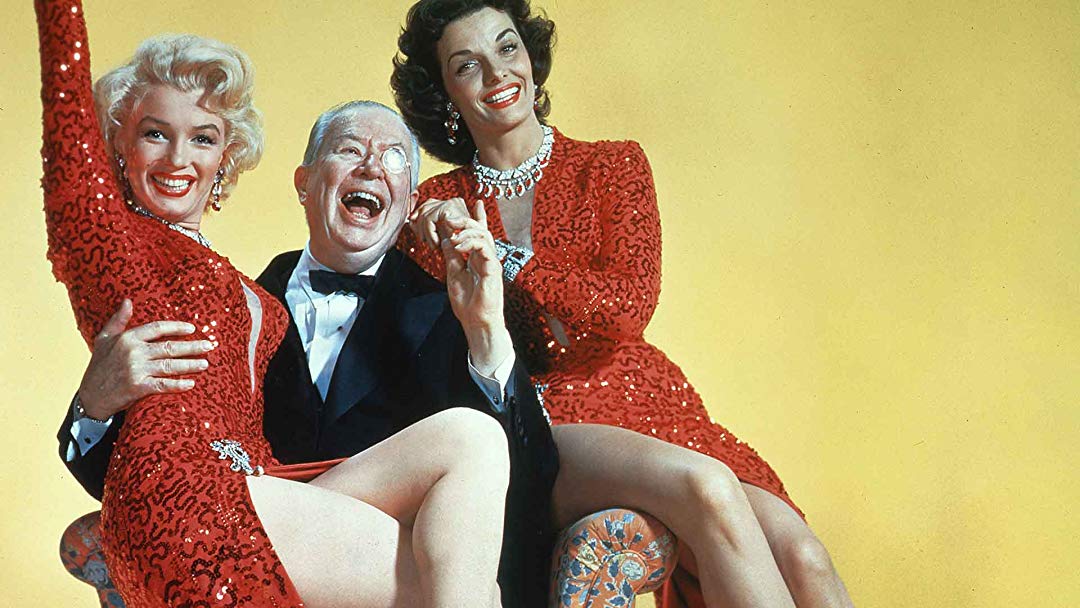'American Gold Digger' reveals untold history of stereotype's influence on society, law

LAWRENCE — Kanye West and Jamie Foxx sang, “She take my money when I’m in need / Yeah, she’s a triflin’ friend indeed / Oh, she’s a gold digger” in their chart-topping song “Gold Digger.”
 Now a new book by Brian Donovan, University of Kansas professor of sociology, examines the history of that loaded term.
Now a new book by Brian Donovan, University of Kansas professor of sociology, examines the history of that loaded term.
“American Gold Digger: Marriage, Money, and the Law from the Ziegfeld Follies to Anna Nicole Smith” (University of North Carolina Press, 2020) showcases stories of greedy flapper-era chorus girls to reality TV-era money-grabbers. Yet it also reveals how these so-called gold diggers helped influence key aspects of society.
“People assume it’s a superfluous stereotype that has no real impact,” Donovan said.
“What I show in the book is it’s a construct with consequences. The image of the gold digger and the language of gold-digging became part of the way people talk about marriage law. And, in the case of Anna Nicole Smith, inheritance law. It’s not a frivolous stereotype; it influences how judges, juries and politicians make sense of things like breach of promise law and alimony that have a real impact on people’s finances.”
While researching gold diggers – which he defines as “women who are in, or seek, romantic relationships primarily for financial gain” — Donovan was amazed no other books focused on this overall topic. He ran across biographies of Peggy Hopkins Joyce (an actress/model of the 1920s regarded as a pioneering target of the term), but there was no comprehensive history that made the connection between these individuals and actual laws.
Historically, the term became a household phrase during the 1930s when a push began to outlaw so-called “heart balm” statutes. These encompass four types of laws: seduction, criminal conversation, alienation of affection and breach of promise, which is when a man promises to marry a woman and then reneges on that agreement.
“That last one was a suable offense and a very popular tort for most of the 19th century and into the 20th century,” Donovan said.
“I thought this was probably led by men who’d faced a breach of promise lawsuit. But the crusade against it was actually led by upper-class women who felt that these gold diggers were taking away what used to be an acceptable way to preserve a woman’s reputation. And these gold diggers were cheapening it by launching frivolous breach of promise lawsuits.”
Donovan chose to include model Anna Nicole Smith in his book’s subtitle because he considers her the most well-known gold digger of the modern era.
“If I say the name Peggy Hopkins Joyce, no one knows who I’m talking about. But people of a certain age are familiar with Anna Nicole Smith because she was a world-renowned supermodel. And she was part of a groundbreaking movement within modeling in that she was a full-figured model who hearkened back to Marilyn Monroe. Smith had this retro image that was very different from Kate Moss and the waiflike or ‘heroin chic’ models popular in the ’90s,” he said.
She also had her own reality TV series.
Smith, who died of a drug overdose in 2007, eventually became a constant fixture of tabloids and gossip shows after her marriage to 89-year-old billionaire J. Howard Marshall when she was just 27.
“People sense that Smith was a true gold digger because she married a man of ill health who was extremely wealthy and quite a bit older than she was,” Donovan said.
“But what most don’t know is that — although her husband spent a lot of money on her when he was alive — despite all the headlines, she never saw any of the millions of dollars at stake in the inheritance battle that involved her stepson, E. Pierce Marshall.”
A faculty member at KU since 2001, Donovan focuses on gender, historical sociology, U.S. cultural history and sociology of law. He is the author of the 2006 book “White Slave Crusades: Race, Gender and Anti-vice Activism, 1887-1917” and 2016’s “Respectability on Trial: Sex Crimes in New York City, 1900-1919.”
He said, “There’s a connection between my second book’s coverage of seduction laws and the legal themes in 'American Gold Digger.' However, I feel my new book is more similar to my first one in how it looks at the cultural sphere where a stereotype or trope has power in very real economic, legal and material ways.”
Donovan believes this latest project will appeal to historians because it offers a unique understanding of the history of marriage. He also thinks sociologists will appreciate how it demonstrates the potency of culture to shape law.
“But I also hope it acquires a wider audience,” he said, “because it’s a fascinating look at this image that begins with chorus girl slang in the 1910s and then grows to have this power to shape not just movies and magazine articles but our conversations about marriage and the financial stakes of relationships.”
Top photo: Twentieth Century Fox publicity still of 1953’s “Gentlemen Prefer Blondes.”